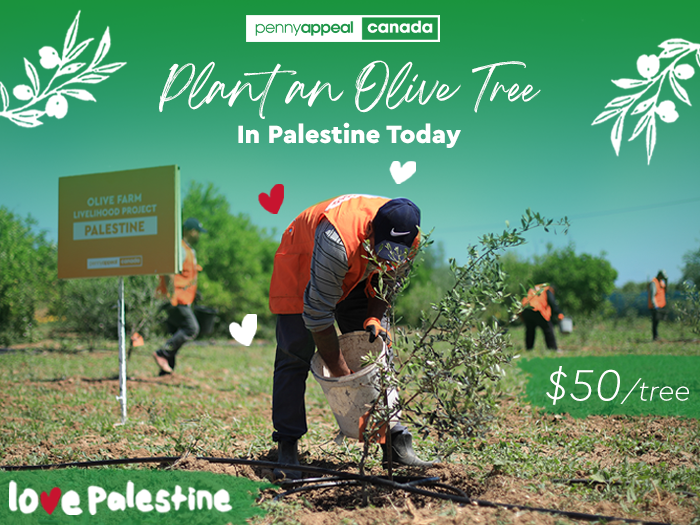In the intricate tapestry of Christian thought, the act of planting olive trees transcends mere horticulture; it is imbued with profound symbolism reflecting hope, resilience, and stewardship of the Earth. In Palestine, the land where many biblical narratives unfold, the olive tree stands as a testament to ancient traditions and divine blessing. This article will explore not only the practical aspects of cultivating olive trees in Palestine but also the rich spiritual and cultural significance embedded in this agricultural endeavor.
To commence, it is imperative to understand the olive tree’s significance in biblical literature. Olive trees are mentioned frequently throughout the Scriptures, symbolizing peace, prosperity, and covenant relationships. When Noah sent forth a dove from the ark, it returned with an olive branch, heralding a promise of renewal and hope. This biblical imagery continues to resonate within the hearts of many Christians today, making the act of planting olive trees a poignant expression of faith and continuity.
Planting olive trees in Palestine begins with careful selection of the variety suited for the region’s unique climate. The two primary types cultivated are the ‘Souri’ and ‘Nabali’ varieties. The Souri is revered for its high-quality oil, while the Nabali offers robust fruit production. Understanding the regional characteristics, including soil composition and climate conditions, is critical for successful cultivation. In areas that experience both aridity and occasional torrential rains, it is crucial to choose a variety that balances these extremes effectively.
Once the appropriate variety is selected, the next phase involves preparing the land for planting. This includes clearing the area of weeds and debris, which can compete with the young saplings for nutrients and moisture. A well-drained, fertile soil is essential for the root expansion of olive trees. Developing a planting layout that accounts for adequate spacing between each tree will ensure sufficient sunlight penetration and air circulation, which are vital for healthy growth. Additionally, soil amendments may be necessary to enhance nutrient availability, with organic matter and compost providing a sustainable approach to soil enrichment.
When planting the saplings, a pit approximately one meter deep and wide should be dug, ensuring that it is amply filled with nutrient-rich topsoil once the tree is placed. Careful handling of the roots during this process is essential to avoid damage. The young tree should be positioned such that the root collar is level with the soil surface. Once planted, watering is critical but must be approached judiciously; excessive moisture can lead to root rot, while insufficient watering hampers early growth.
In addition to the practicalities, it is crucial to consider the theological implications of cultivating olive trees. In many Christian communities, the act of planting trees embodies a commitment to environmental stewardship, reflecting the biblical mandate to care for creation. This stewardship has broader implications within the community, fostering a sense of sharing and interconnectedness, as olive oil remains a staple in Palestinian kitchens and a significant commodity in local economies.
Moreover, the olive tree serves as a powerful metaphor for peace and reconciliation in a region often marred by conflict. Christians engaged in agriculture may find in this endeavor an avenue for communal healing, where the act of planting becomes a collective commitment to life and hope amidst adversity. This communal act of planting can provide a platform for dialogue and unity, demonstrating that despite sociopolitical divisions, the shared goal of nurturing creation is a common ground for all.
As the olive trees mature, they require ongoing care. This includes necessary practices such as pruning, which enhances air circulation and sun exposure while promoting higher fruit yields. Pruning is best conducted in late winter or early spring, ensuring that the trees remain vigorous and productive. Fertilization, pest management, and irrigation also require attention, particularly during the pivotal growing seasons, to safeguard against diseases that could threaten the trees’ health.
The connection between the olive tree and the Christian narrative extends into modern practices. Many churches and organizations champion initiatives to support the cultivation of olive trees in Palestine, emphasizing sustainable agriculture as a means to combat poverty and nurture local economies. By participating in such projects, individuals reinforce their commitment to supporting the livelihoods of their brothers and sisters in the faith, illustrating the tangible impact of stewardship in action.
Harvesting olives marks a significant moment in the life cycle of the tree. Traditionally occurring in the late summer and early autumn, this time of year is filled with both anticipation and gratitude. The process of harvest often involves the community coming together, reflecting the rich tapestry of cultural practices associated with olive cultivation. Olives can be pressed into oil, a vital ingredient not only for daily sustenance but also for culinary traditions deeply rooted in biblical history.
Ultimately, planting olive trees in Palestine encapsulates a journey of faith, resilience, and hope. It is an endeavor that requires patience, dedication, and a commitment to the well-being of the community and environment. Whether through direct involvement in agriculture or as patrons of supportive initiatives, Christians are invited to witness how the simple act of planting can yield profound spiritual and communal rewards.
In the end, the olive tree stands as a symbol of enduring hope—its roots deepened in the nurturing soil of faith, and its branches reaching outward in a gesture of peace and reconciliation. This agricultural practice not only sustains the body but also nourishes the spirit, reaffirming the divine connection between humankind and creation within the heart of Palestine.



